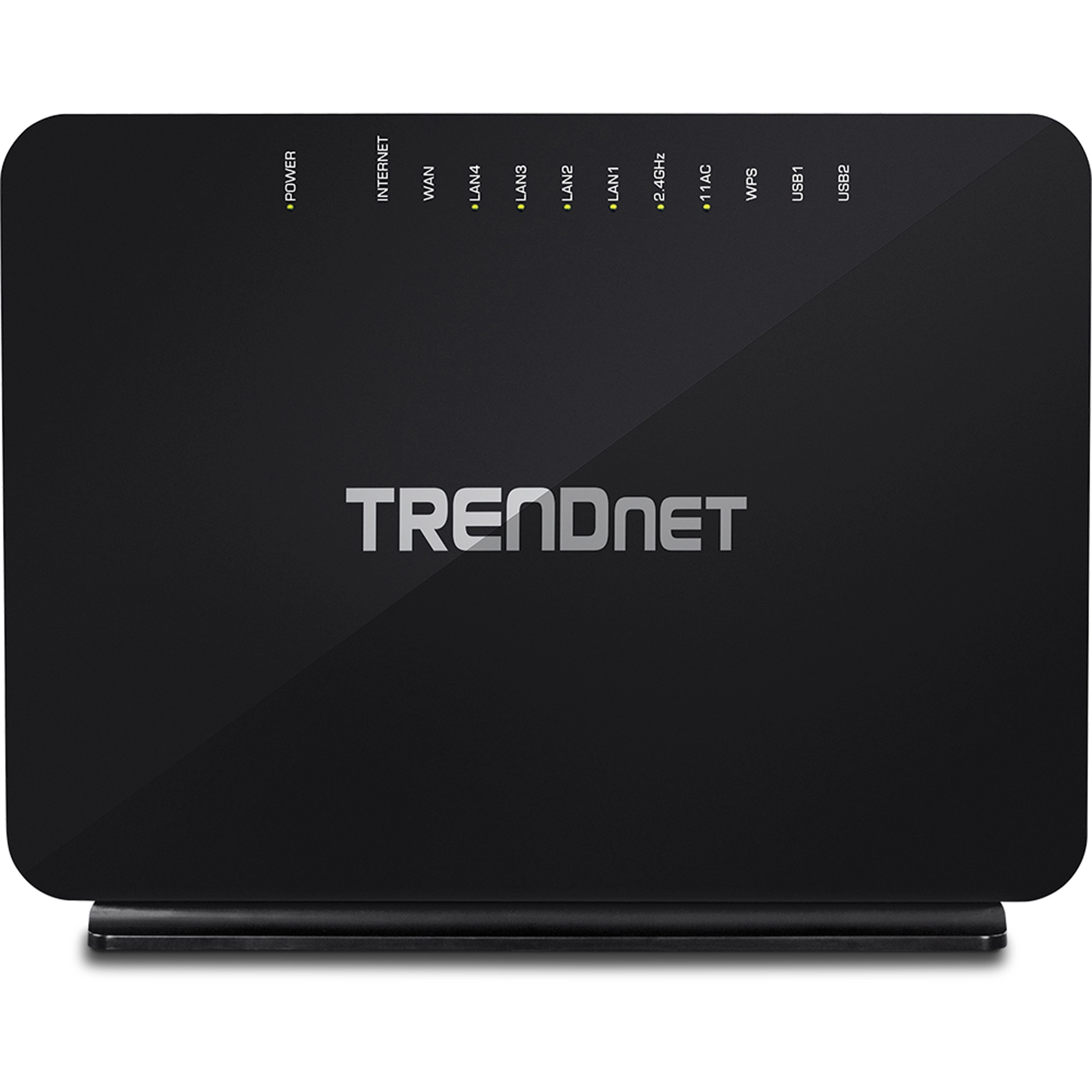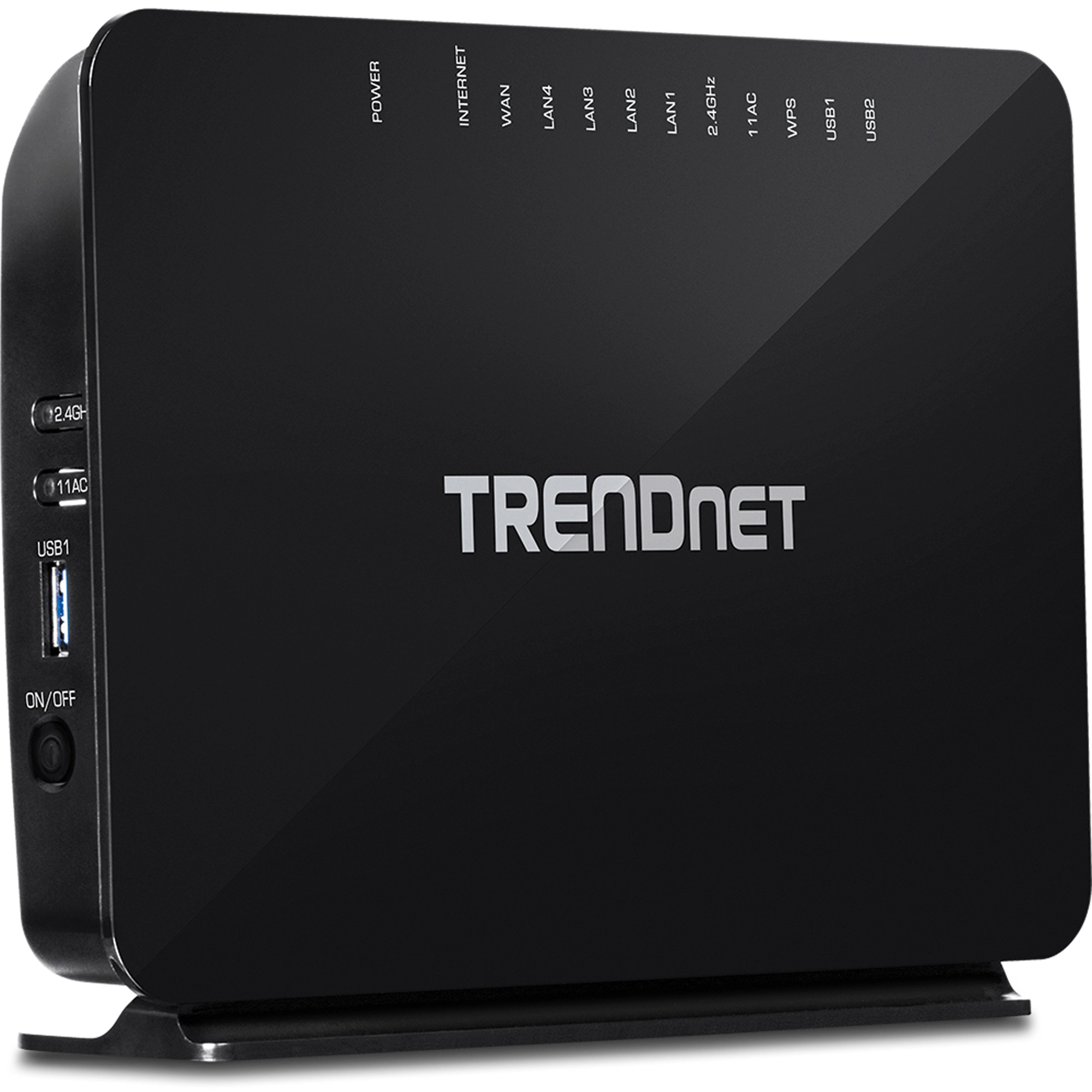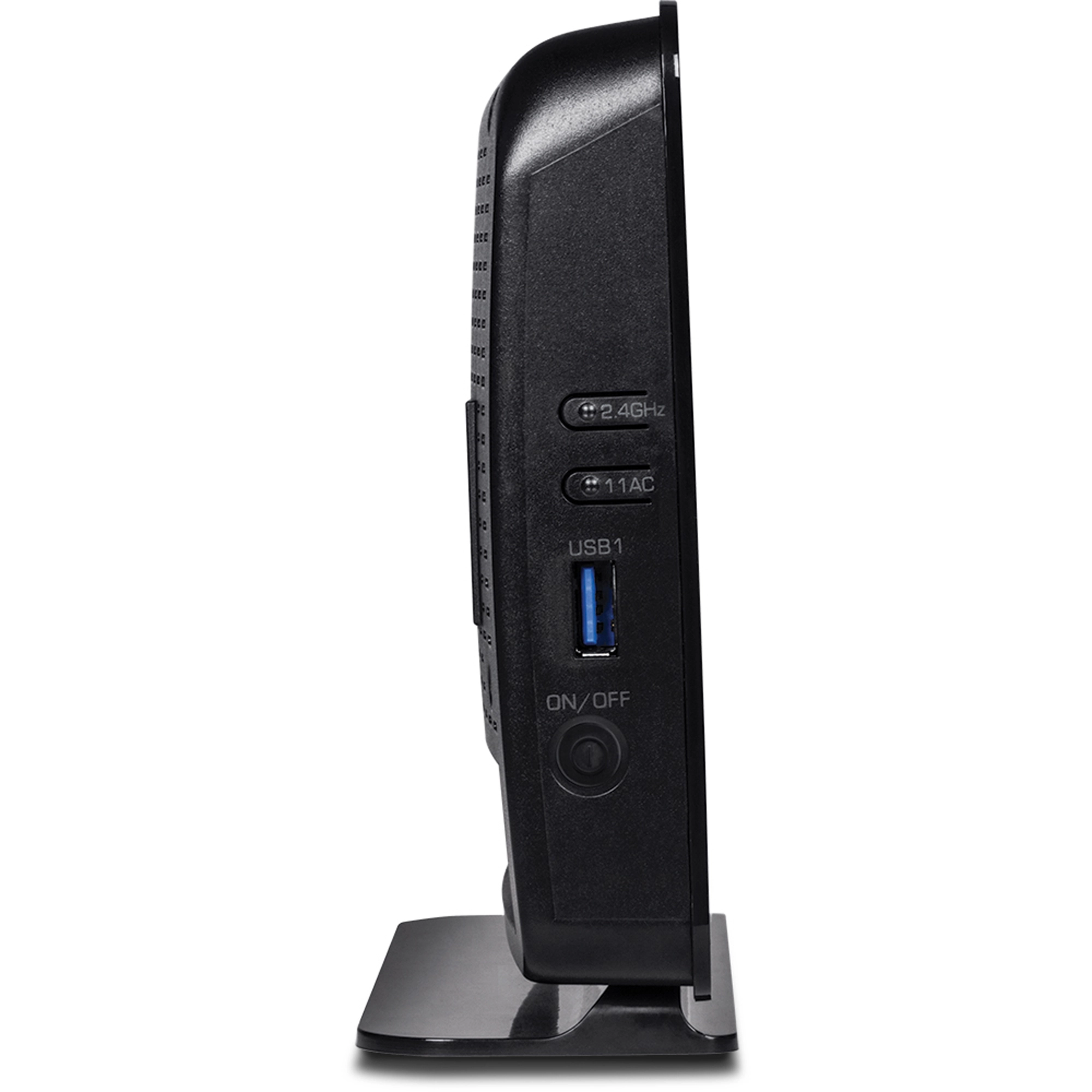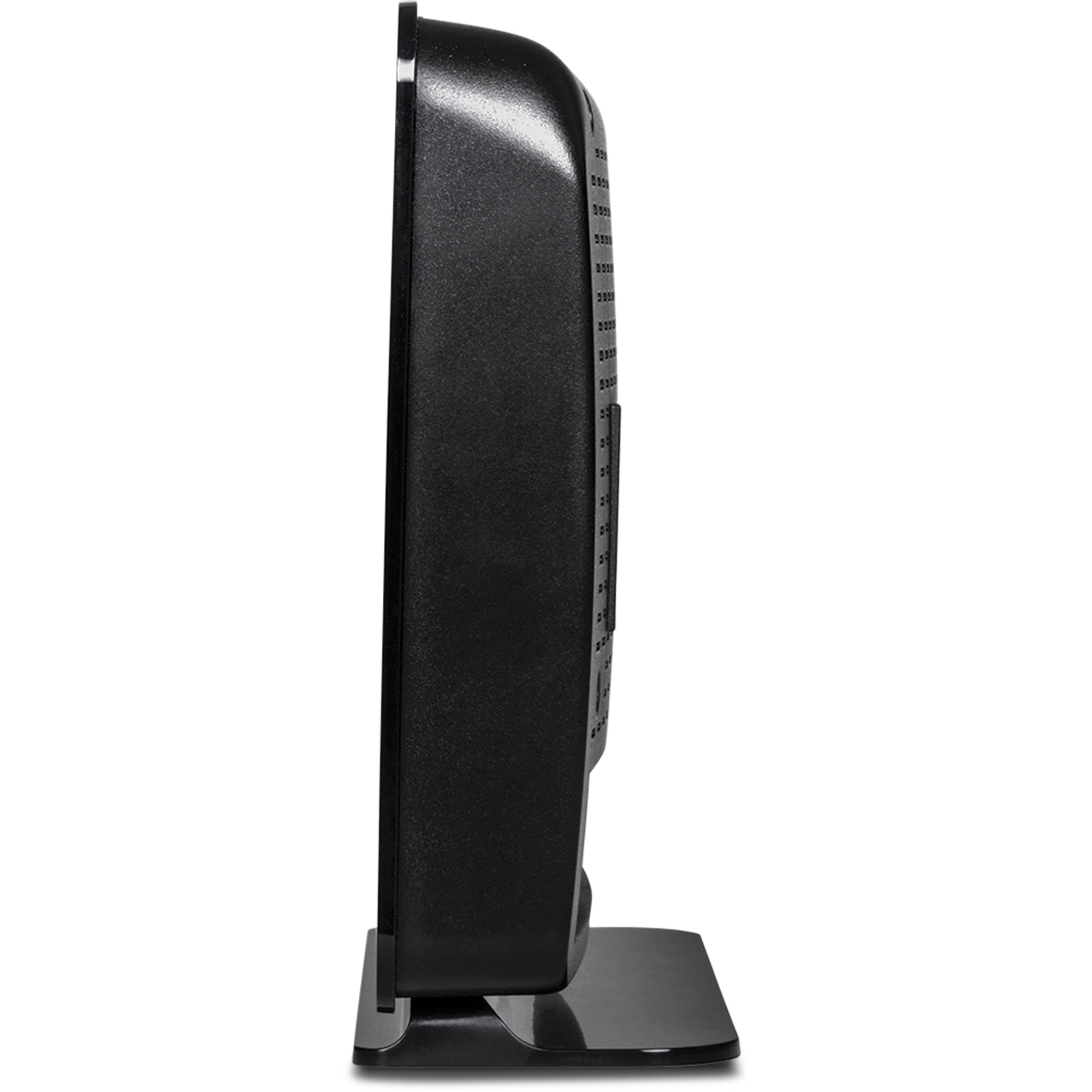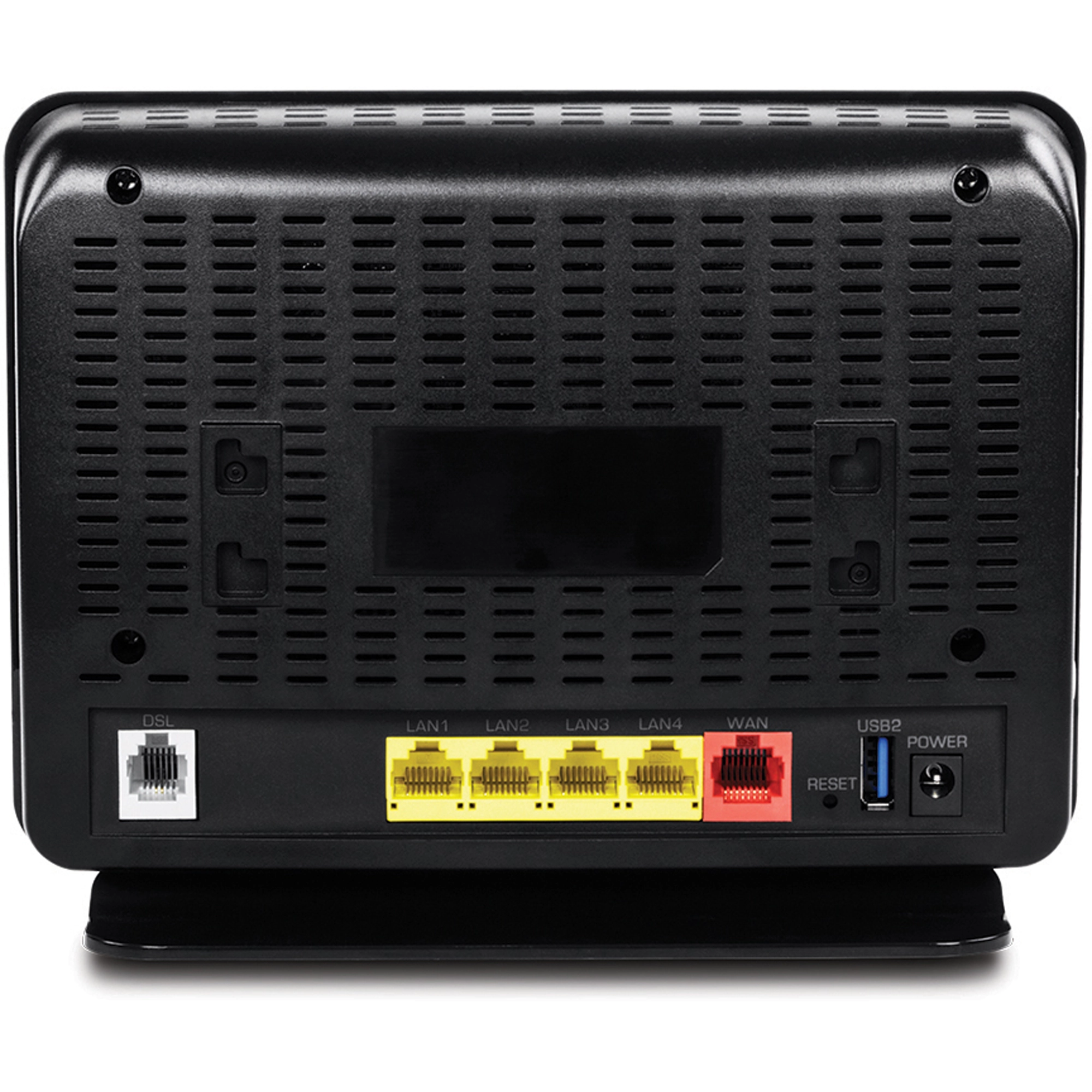AC750 Wireless VDSL2/ADSL2+ Modem Router
TEW-816DRM (Version v1.0R)
- Combination high performance modem and wireless router
- Compatible with VDSL2/ADSL2+ ISP networks
- VDSL2: downstream throughput of up to 200 Mbps
- Wireless AC750: 433 Mbps AC + 300 Mbps N bands
- Pre-encrypted wireless for your convenience
- Two USB and four Ethernet ports
TRENDnet's AC750 Wireless VDSL2/ADSL2+ Modem Router, model TEW-816DRM, offers a combination high performance modem for internet access and a powerful wireless AC750 router. The built-in modem supports the latest ADSL2+ and VDSL2 standards for downstream speeds of up to 200 Mbps*. Wireless AC750 produces concurrent high speed 433 Mbps Wireless AC and 300 Mbps Wireless N networks. Use the two USB and four Ethernet ports to share content and devices across the network.

High Speed Internet
The built-in extreme performance modem supports internet speeds to your home, from your ISP, of up to 200 Mbps!

WiFi for All
Connect all of your WiFi AC and N devices to the concurrent 433 Mbps WiFi AC and 300 Mbps WiFi N networks.

USB Share Ports
Plug in USB flash or storage drives to the two USB ports to share content across your network.
_1.jpg)
_chart.jpg)
Easy Setup
Get up and running quickly with the intuitive guided setup
VDSL Internet Service
Compatible with VDSL2 internet service provider networks (Profile 8a, 8b, 8c, 8d, 12a, 12b, 17a, and 30a support) for downstream throughput of up to 200 Mbps*
ADSL Internet Service
Compatible with ADSL 2/2+ internet service provider networks (ADSL 2/2+ and Annex A, B, I, J, L, and M support)*
Wireless AC750
Concurrent high speed 433 Mbps Wireless AC + 300 Mbps Wireless N bands
Pre-Encrypted Wireless
For your convenience the wireless network arrives pre-encrypted with its own unique password
One Touch Connection
Connect to the router at the touch of the Wi-Fi Protected Setup (WPS) button
Ethernet Ports
Four Ethernet ports to connect wired devices
USB Share Ports
Plug in flash or storage drives to the two high speed USB ports to share content across the network
Parental Controls
Control access to specific websites and manage which devices can access the router
Remote Management
Remote management and troubleshooting support with TR-069
3G WAN Backup
3G WAN backup support
IPv6
IPv6 network support
On/Off Power Button
Convenient on/off power button
| VDSL/ADSL Line Interface |
|
|---|---|
| Standards |
|
| Hardware Interface |
|
| Special Features |
|
| Access Control |
|
| Quality of Service |
|
| Internet Connection Types |
|
| Management/Monitoring |
|
| Routing |
|
| Frequency |
|
| Modulation |
|
| Antenna Gain |
|
| Wireless Output Power/Receiving Sensitivity |
|
| Wireless Channel |
|
| Power |
|
| Operating Temperature |
|
| Operating Humidity |
|
| Certifications |
|
| Dimensions |
|
| Weight |
|
| Warranty |
|
PACKAGE CONTENTS |
**Maximum wireless signal rates are referenced from IEEE 802.11 theoretical specifications. Actual data throughput and coverage will vary depending on interference, network traffic, building materials and other conditions.
Top 5 Reasons to Consider an AC Router
New to Networking: Wireless AC vs. Wireless N
DIY: Setting up a Wireless AC Network
DIY: Connecting an Internet TV with Wireless
DIY: Extending Your Wireless Network
DIY: 3 Simple Steps to Improve Wireless Performance
Wireless Encryption Options


